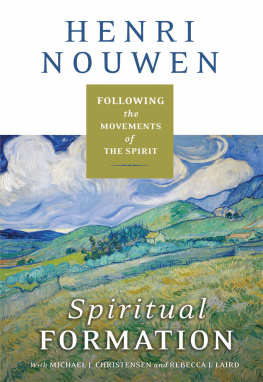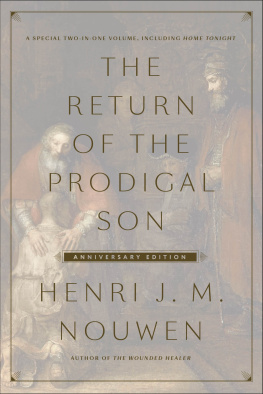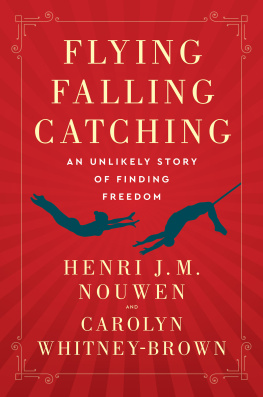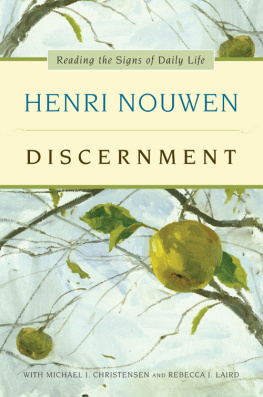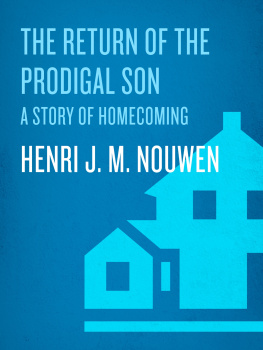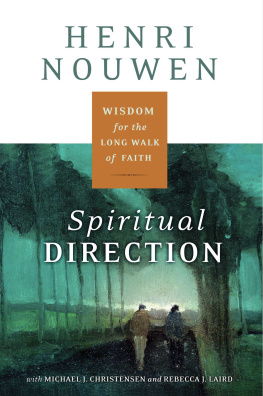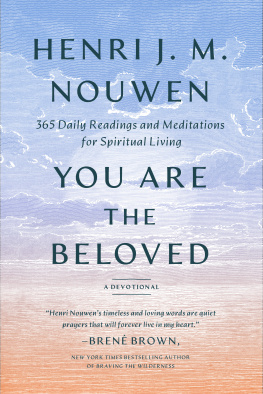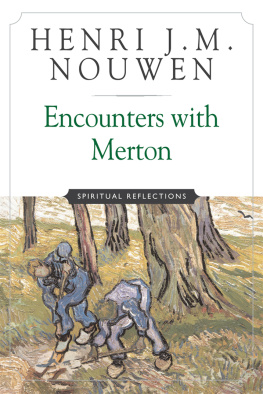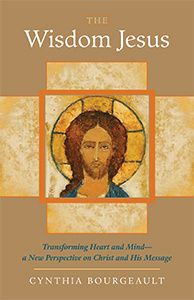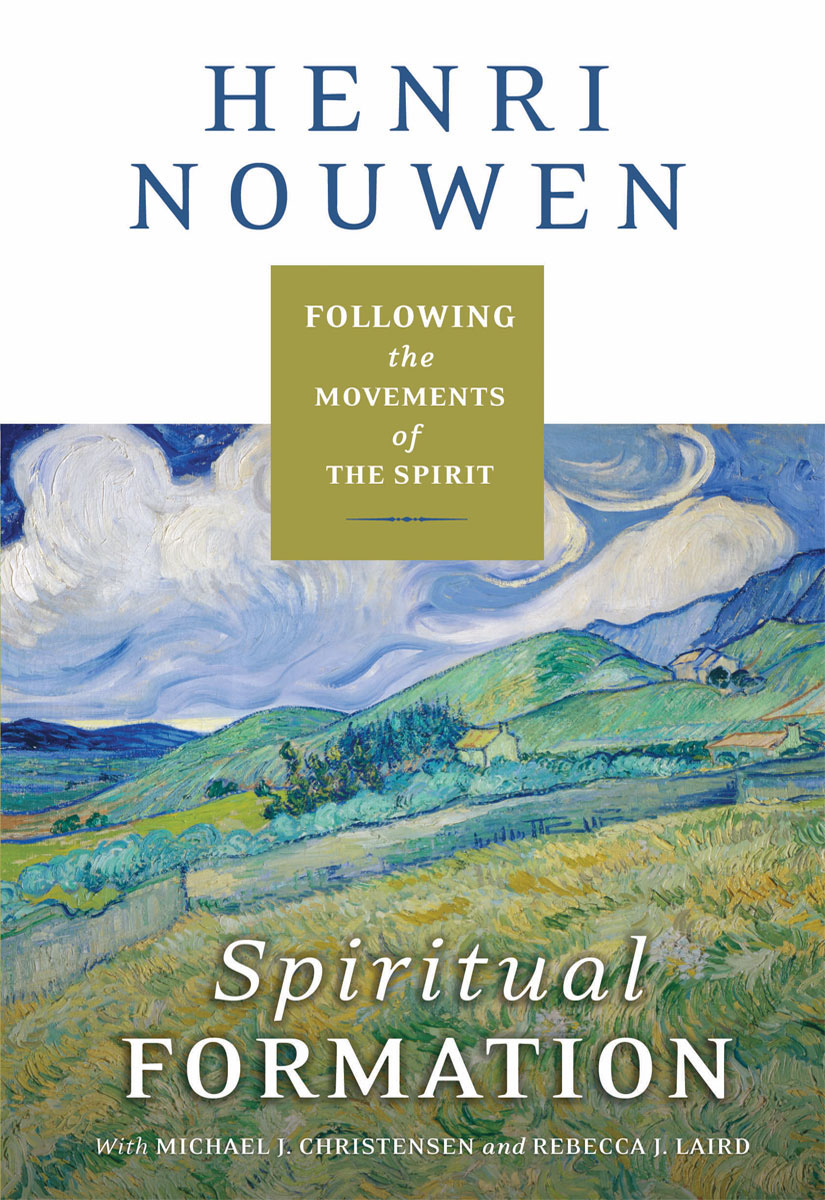What This Book Is About
This book is a primer on how to live a spiritual life. Rather than being about steps to enlightenment, this book is about the practices of the heart. Instead of progressive stages of development, it is about movements from the things that enslave and destroy to liberation and life. This book identifies the psychospiritual dynamics, contradictions, and movements common to many who seek to live spiritually in a world of constant change and motion. This book offers spiritual wisdom on how to move from the mind to the heart and live there in the centerthe place where God dwells.
Spiritual formation presents opportunities to enter into the center of our heart and become familiar with the complexities of our own inner life, wrote Henri Nouwen, one of the most widely read and articulate spiritual writers of the late twentieth century. Beyond his forty-plus published books on Christian spirituality, this particular book contains his integrated teachings and personal examples of the way of the heartthe way to descend from the mind into the heart and there be shaped by the Spirit of God within. As a pastor, psychologist, professor, and pioneer in the field of pastoral psychology, Henri Nouwen is a trustworthy guide to what is now commonly called spiritual formation.
As a Roman Catholic, Nouwen inherited a rich tradition of spiritual formation within Catholic mystical theology that was understood as following progressive stages and applying discrete disciplines leading to spiritual union. Later, as a psychologist, he integrated and developed a more psychodynamic understanding of the inner polarities of the human psyche (soul), which he located in the hearta persons core self or spiritual center, where ones physical, mental, and emotional lives come together as one in relation to God. As these inner polarities are better understood and oriented toward God, transformative movement is possible. When the human heart is open and responsive to the movements of the Spirit, healthy spiritual formation inevitably occurs.
By reflecting on his own spiritual experience and the experiences of others, Nouwen was able to articulate personal and universal qualities of the inner life in relation to spiritual formation. In his first book, Intimacy: Essays in Pastoral Psychology, he focused on the inner dynamics of fear, shame, vulnerability, identity, self-respect, anxiety, love, and hope. These psychological and spiritual polarities, he believed, prompt transformative movements within the spiritual journey. By identifying a particular quality of inner life, he was able to articulate a corresponding discipline and movement in spiritual developmentfrom this quality to that, from something enslaving and destructive to something liberating and life giving. For example, in his book Reaching Out, the first movement Nouwen identifies is from loneliness to solitude, requiring the discipline of silence; the second is from hostility to hospitality, inviting the discipline of ministry; the third movement is from lifes illusion to the prayer of the heart, requiring both contemplative prayer and community discernment.
The movements of the Spiritsome major, some minormay vary with the individual and with ones season of life and
To live spiritually, then, we seek to breathe with the Spirits rhythm and move in a God-ward direction on the long walk of faith. The process involves becoming aware, naming the condition, and following the subtle movements of Spirit in our hearts and in our lives. The major movements, according to Nouwen, are from opaqueness to transparency, from illusion to prayer, from sorrow to joy, from resentment to gratitude, from fear to love, from exclusion to inclusion, and from denying to befriending death. These seven movements and many more constitute the way of the heart, the way of spiritual formation.
Spiritual Formation: Following the Movements of the Spirit is Nouwens consolidation of the classical disciplines, traditional stages, and spiritual movements as a dynamic journey of faith requiring daily reflection and intentional practice. As such, it is suitable for individual reflection as well as small-group process.
H OW T HIS B OOK C AME TO B E W RITTEN
Following the warm reception and productive feedback from Spiritual Direction the earlier book we developed from Henri Nouwens notes and manuscripts, we wondered if there might be another good book to develop from his multitude of tapes and writings. As a student of Henris at Yale and a reader of his books since the early 1980s, I, Michael, noticed the persistent pattern of movements in his oral presentations and writings. Upon rereading his many books in later years, I started to count the number of movements he identified, noticed how he changed the names of the movements from book to book, and wondered whether this was a rhetorical or pedagogical device for easier learning, or whether the movement language was meant to describe the way God works in our hearts, moving us from one condition to another in repetitive patterns and cycles.
When my coeditor, Rebecca Laird, reexamined his psychological theory of spiritual development from his research days at the Menninger Institute and reread The Wounded Healer, his most important contribution to the field of pastoral psychology, it all became quite clear: Henri was reconstructing and integrating the classical stages and disciplines in light of pastoral psychology and new understandings of Christian spirituality in order to better reflect human reality in the late twentieth century. The fruit of his creative work is a new, transformative approach to spiritual formation.
This posthumous book is a product gleaned from many of Nouwens works. Henri wrote constantly about the inner movements on his journey of faith. In the aftermath of his death, we spent a couple of years locating and pulling together various strands of his teachings about these movements in his unpublished homilies, interviews, class lecture notes, speeches, and published journal articles and books. Then we integrated them into a coherent whole in the service of new contexts and readership. Thus, movements familiar to longtime Nouwen readers are updated, restructured, and recontextualized for new audiences.
Spiritual Formation: Following the Movements of the Spirit is the second in an anticipated three-volume set on living a spiritual life. The first volume, Spiritual Direction, on living the questions, was published in 2006. The third, Spiritual Discernment, on reading the signs of daily life, is next. Each volume stands alone and can be read without having read the others. Yet together they constitute a spiritual trilogy by Henri Nouwen.
H OW T HIS B OOK C AN B E R EAD
Formation takes time, a lifetime. This book is best ready slowly, and not necessarily sequentially, rather than all at once. Spiritual formation is personal and inward, but it is best done in a community of support. Therefore, it would be good to read this book with a small group over a period of seven weeks or even multiple months, allowing sacred time for each chapter to guide your inner work. Others who are committed to their own spiritual journey can offer support and a form of spiritual guidance along the way.

